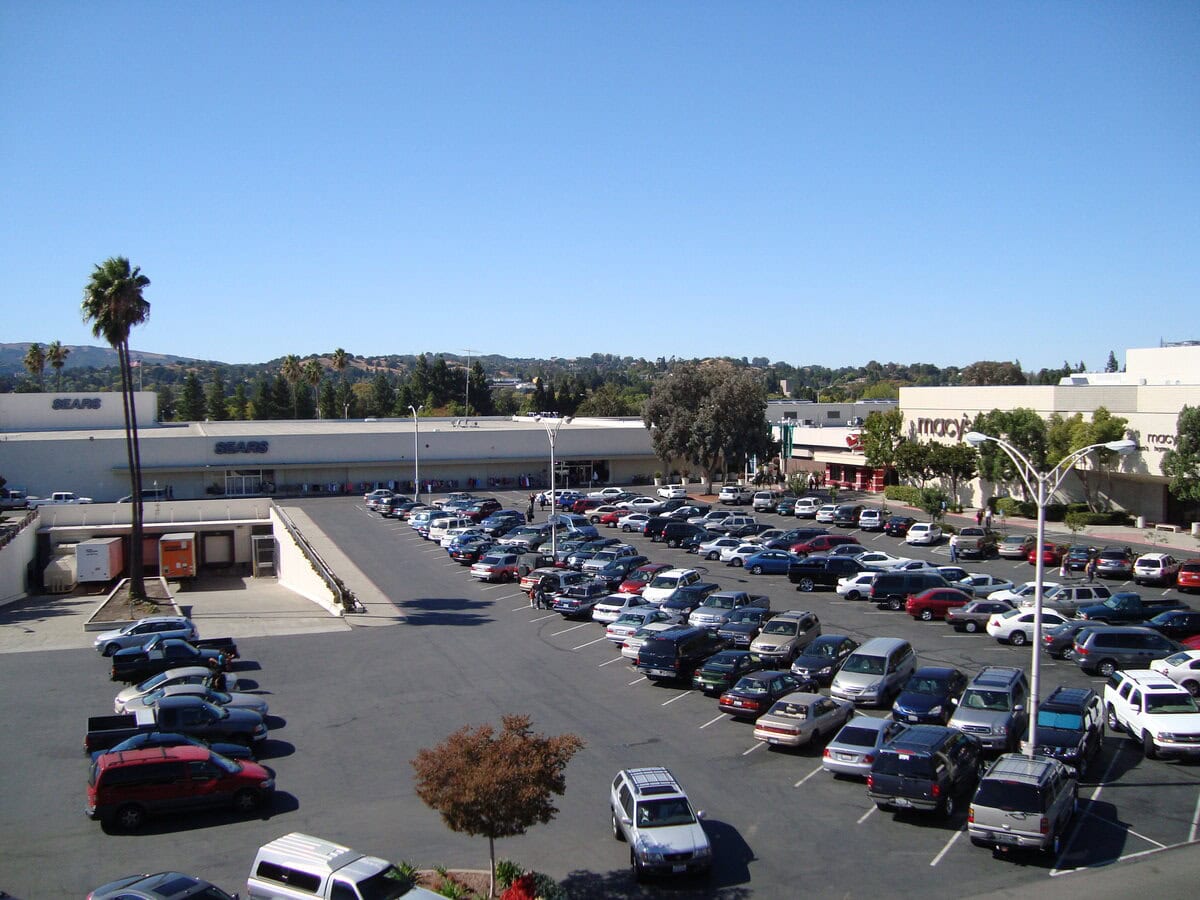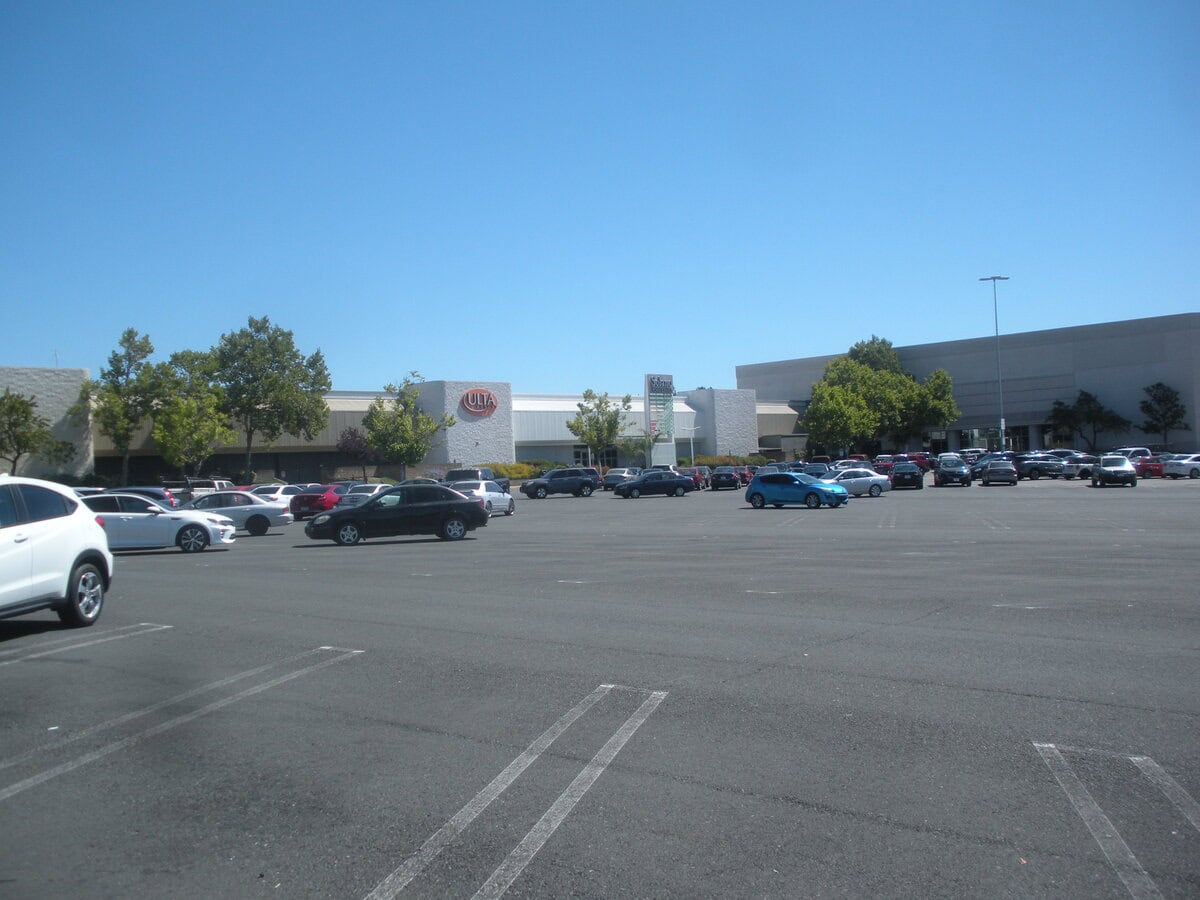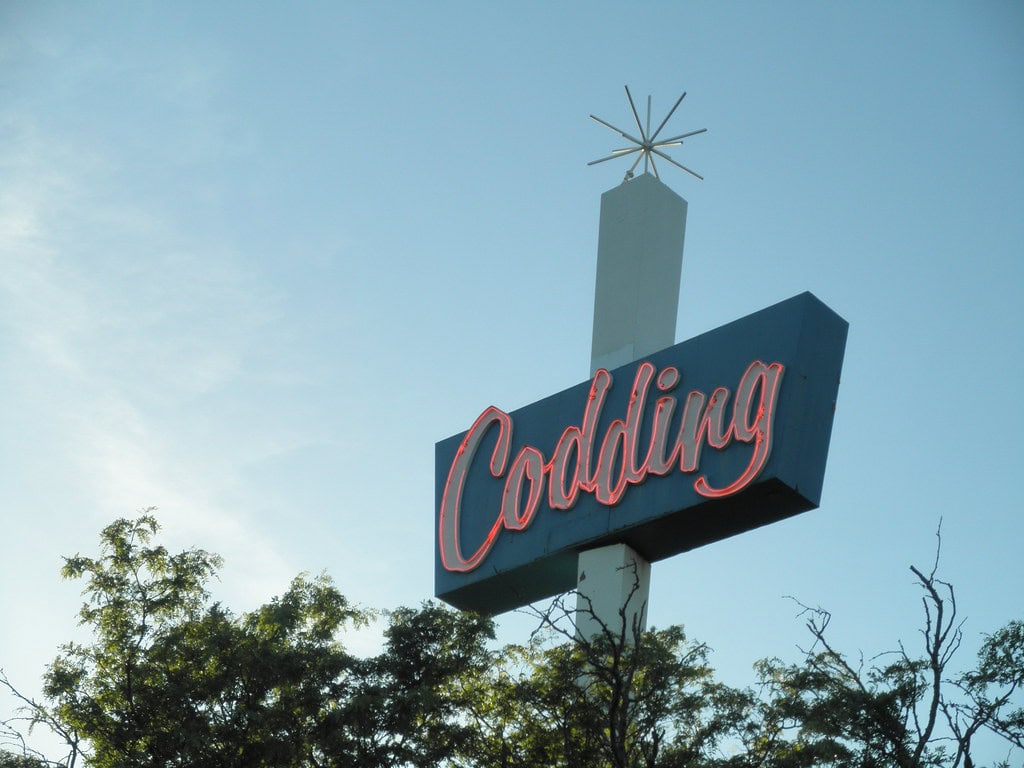The long stretch of Interstate 280 offers little warning before Serramonte Center rises into view. Beige walls, wide angles, and long-standing anchor names have kept it steady since the late 1960s.
Serramonte Center in Daly City, California, opened in September 1968 as a suburban shopping center. Half a century later, it continues to adjust to new shoppers and new needs.
Few Bay Area malls can say they added a 75,000-square-foot Korean market in 2025 or still pack parking lots with 4,600+ spaces.
For anyone looking for things to do south of San Francisco, Serramonte Center keeps serving up new reasons to exit the freeway.
Retail Launch and Suburban Betting
Serramonte Center began its public life in September 1968, dropping into Daly City at the junction of California State Route 1 and Interstate 280.
It started with a floor area close to 895,000 square feet, shaped in a single-level cross plan anchored by Macy's, Mervyn's, and Montgomery Ward.
Shoppers stepping inside that fall could walk from Kinney Shoes to B. Dalton, pass Longs Drugs, grab samples at Hickory Farms, and bag groceries at QFI.
Developers Fred and Carl Gellert pitched the mall as the commercial centerpiece of the Serramonte planned community.
Their bet relied on the postwar sprawl mentality - new freeways, affordable subdivisions, and the raw convenience of malls that turned errands into social afternoons.
Serramonte's 4,645 parking spaces sat ready for the rush.
The surrounding marketing hit hard on two themes: suburban ease and Peninsula access.
Early ads made sure San Francisco and San Mateo County residents saw Daly City as a quick drive rather than a haul.
At the time, the focus was simple: bring in shoppers, keep them moving through anchor stores, and feed the storefronts in between. The formula worked.
By 1970, Serramonte Center had cemented itself as a retail fixture, with dozens of national chains clustered under one roof and the highway system feeding them customer after customer.
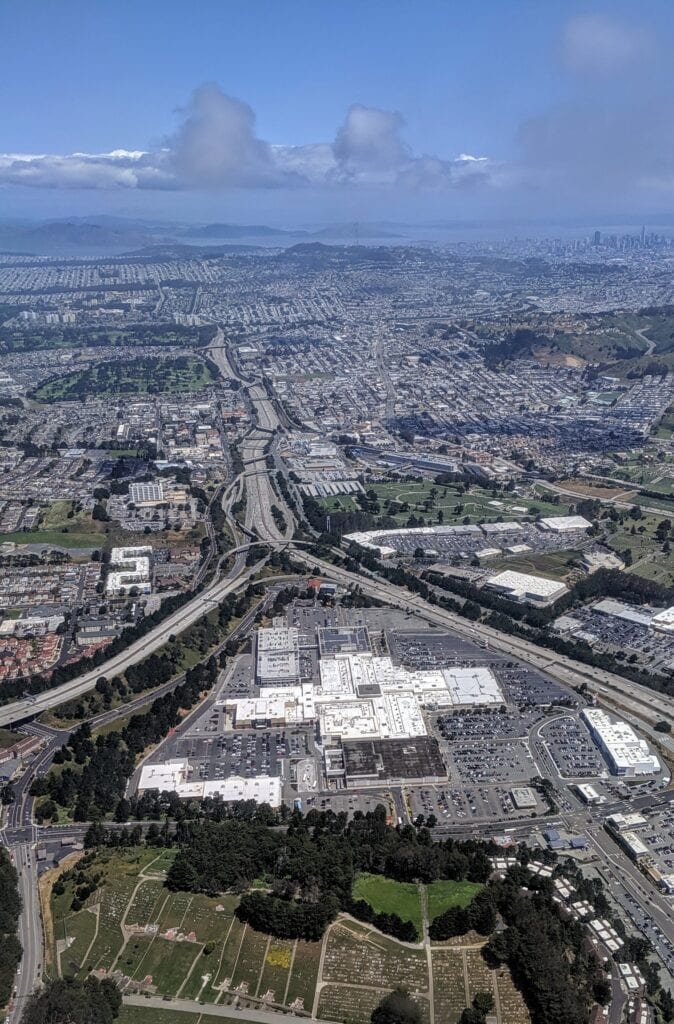
Ownership Transfers and Strategic Renovations
By the late 1990s, Serramonte Center faced the same problem hitting malls across the country: older layouts, shifting anchor strategies, and newer retail competitors creeping closer.
The ownership baton passed in 2002 when Capital and Counties USA bought the mall.
The change was more than paperwork - it opened the door for practical updates that went beyond surface polish.
When Montgomery Ward folded nationally the same year, Target took over its space, helping Serramonte stay anchored to a retailer with strong foot traffic numbers.
In 2004, another pivotal move reshaped the mall's core spaces.
Equity One, then part of the ownership chain, led a renovation that turned the Grand Court into a feng shui-inspired centerpiece.
A koi pond installation reflected both Bay Area demographics and a broader push to make malls feel calmer and more inviting, less concrete, more atmospheric.
Physical layouts stayed mostly the same, with one main level of shops and dual-level construction only at Macy's, Dick's Sporting Goods, and the new Dave and Buster's pad later.
Leases kept rolling, but the retail game was changing underfoot.
National chains such as Hickory Farms faded while lifestyle concepts nudged into focus.
During this stretch, the center managed to maintain its role as a major Peninsula retail address without tearing up its entire structure, which helped when bigger expansion plans arrived.
Expansion Projects and Anchor Turnover
City Hall approved a $109 million expansion plan for Serramonte Center on June 29, 2015, allowing the largest increase in square footage since its original construction.
The redevelopment added around 200,000 square feet to the complex, pushing gross leasable area well past 1.1 million square feet.
A multistory garage rose on site, solving decades-old holiday season parking jams that the surface lots alone could not handle anymore.
The anchor shuffle picked up speed during these years, too.
Dick's Sporting Goods opened a two-level footprint on a newly built pad, while Dave and Buster's grabbed another spot with a 2020 opening date.
Nordstrom Rack relocated to Serramonte during this wave as well, chasing steady Peninsula foot traffic.
Press releases at the time stressed the plan to blend mid-market retail like Ross Dress for Less and T.J. Maxx with category-specific stores such as Buy Buy Baby and Cost Plus World Market.
JCPenney closed its Serramonte doors in 2019, a casualty of the chain's broader national retreat.
While that left a hole, the expansion efforts filled it with newer retail names and bigger entertainment draws.
Denny's and Firestone Tires, longtime outparcel tenants, also left after their leases expired, clearing land for additional commercial development.
By the end of the decade, Serramonte's bet on diversified retail and food-focused leasing positioned it for a customer base that no longer wanted traditional department-store-driven malls.
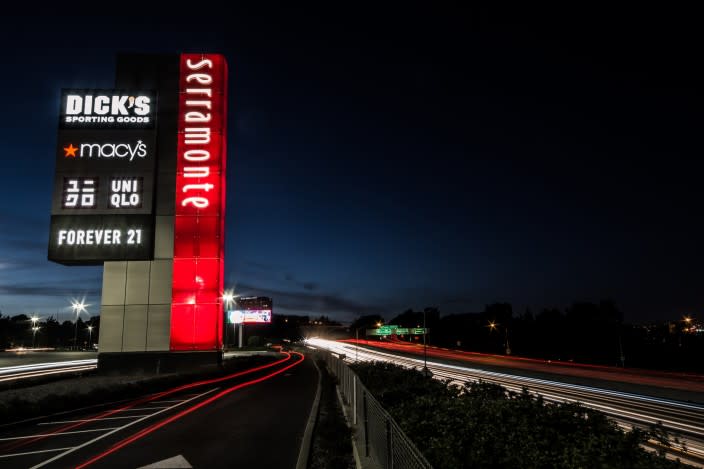
Food-Based Leasing and 2025 Tenant Expansion
By mid-2024, food-led retail officially grabbed the wheel at Serramonte Center.
Management leased space aggressively to culinary and market-focused tenants, reshaping the mall's footprint one bite at a time.
Jagalchi Korean Market, covering 75,000 square feet in the former JCPenney, opened on April 1, 2025, in a high-visibility spot near the mall's western entrance.
The concept stacked a grocery store, two bars, a fresh fishmonger, a butcher, and a 160-seat Korean restaurant into one package.
Opening weekend numbers painted the picture quickly.
Jagalchi drew close to 49,000 visitors during its first three days, and there were long waits and parking lot bottlenecks across the garage levels.
Other small businesses inside the mall reported traffic boosts, too, according to early April retail tenant surveys.
Food wasn't the only expansion track.
In January 2025, Koi Palace, a long-standing Bay Area Cantonese restaurant brand, announced plans to relocate its flagship to Serramonte.
The new restaurant, projected at 20,000 square feet and seating 760 to 800 diners, began construction in the former Mervyn's footprint.
Developers scheduled a December 2025 grand opening to catch the holiday season rush.
Leasing strategies continued to favor food, fitness, and service businesses over traditional clothing or department-store retail.
By the spring of 2025, dining wings became the center of weekend foot traffic, shifting mall patterns toward longer stays and multiple-point visits.
Serramonte Center's leasing pivot showed in occupancy rates, too, with internal figures reaching over 95% for inline spaces by April.
Rental rates nudged upward slightly compared to pre-2020 averages, supported by strong quarterly visitor numbers across the first months of 2025.
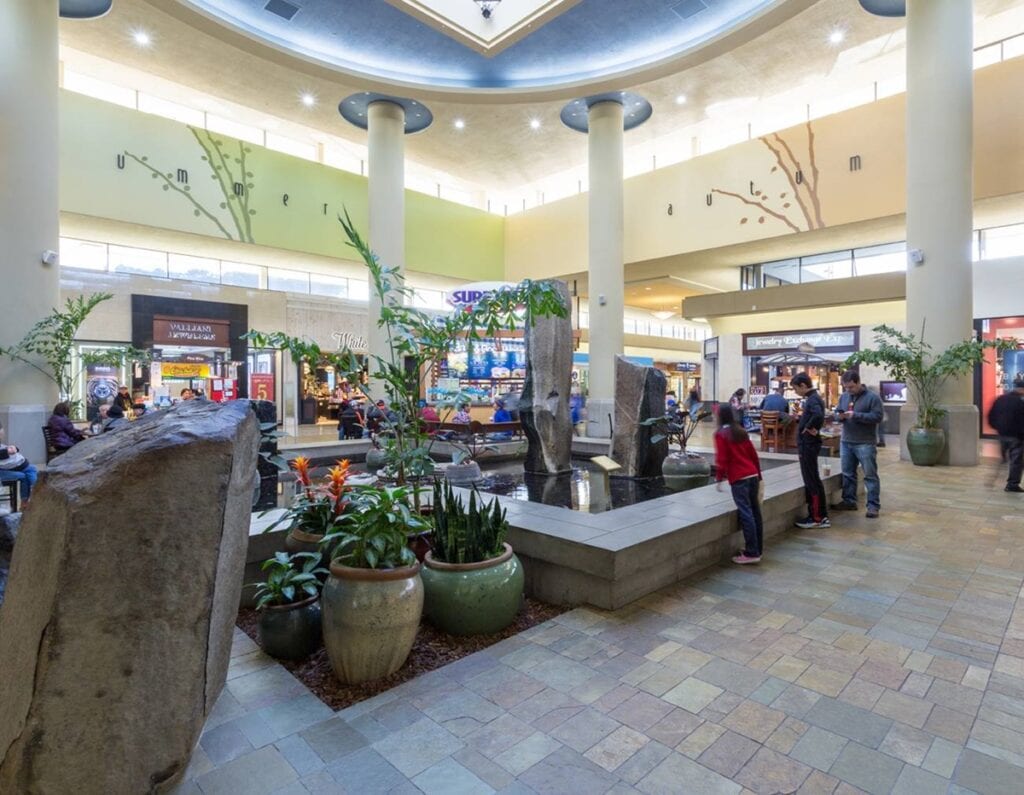
🍀

